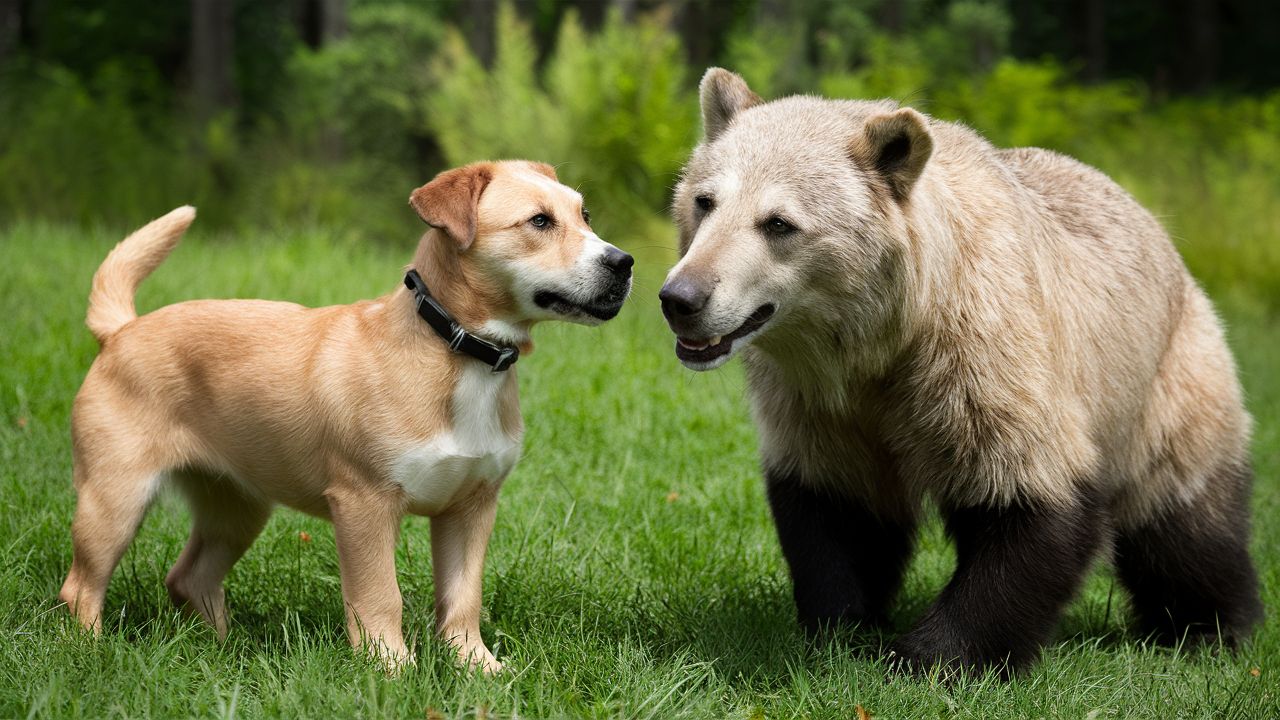It is a common question to wonder about the evolutionary relationships among animals, such as “Are Bears and Dogs Related?” As distinct species, bears and dogs do have a common ancestor that dates back millions of years. Intriguing parallels between these two species, including morphological and behavioral similarities, have been found through genetic research. Their similar genetic background implies a distant relationship, despite their obvious differences in appearance and habitat.
Examine the Genetic Connections
An intriguing investigation into the evolutionary histories of these recognizable animals can be found by looking into the possibility of a genetic relationship between bears and dogs. By examining this relationship, we can gain insight not only into the common ancestry of these seemingly different species but also into the larger picture of biodiversity and the complex web of life on Earth.
Reviewing the Evolutionary Paths
The genetic makeup of bears and dogs reveals fascinating information about their common evolutionary past. Scientists are trying to figure out the complex processes that have molded these famous species over millions of years by tracking their ancestors and looking at genetic markers.
- Similarities in Genetics
By using advanced DNA analysis methods, scientists have discovered remarkable genetic similarities between bears and dogs. These seemingly different creatures have a deep connection, as evidenced by common genetic sequences and shared ancestral traits that shed light on their evolutionary kinship.
- Divergence and Adaptation: The Evolution of Bears and Dogs
Bears and dogs share some genetic traits, but they have evolved along quite different evolutionary pathways due to different environmental pressures and selection. Bears and dogs have an amazing evolutionary history that demonstrates their remarkable resilience and adaptability to a variety of ecological niches and the development of specialized traits.
Behavioral Comparisons
We look at the possible evolutionary history, social structures, and cognitive capacities of bears and dogs through behavioral comparisons.
- Social Structure: Dogs vs. Bears
There are some fascinating behavioral differences between bears and dogs when comparing their social dynamics. Dogs prefer pack behavior, creating cohesive, hierarchical groups, whereas bears prefer to roam vast distances alone. These social structures provide information about how dogs and bears have evolved to survive in their environments.
- HuntingTechniques: Differing Approaches in the Wild
Owing to their distinct evolutionary histories and roles, bears and dogs employ distinct hunting strategies. Dogs hunt in packs with coordination, cooperation, and communication, while bears use ambush strategies and opportunistic foraging. This analogy demonstrates how bears and dogs can adapt to their respective environments.
- Bears and Dogs’ Interaction and Communication
Bears and Dogs converse and interact within their social groups in a variety of ways. Dogs use body language, vocal cues, and scent markings to communicate within their pack, whereas bears use vocalizations, postures, and scent markings. Researching these communication networks reveals information about the social structure and behaviors of dogs and bears in their respective environments.
Physical Similarities and Differences
The anatomical similarities and differences between bears and dogs are indicative of their evolutionary relationships and adaptations. Because of human breeding, bears typically have robust builds and thick fur coats, whereas dogs are more diverse in terms of size, shape, and coat texture. Nonetheless, the morphology of their teeth and skeletons are similar in both species, suggesting a shared evolutionary history.
- Development: Skulls and Teeth
Bears and dogs’ craniums and dental anatomy provide light on their evolutionary histories and dietary preferences. As omnivorous mammals, bears have broad molars and sharp canines that are specifically designed for crushing plants and snaring prey. Dogs are carnivores by nature, with long canines and pointed canines for slicing meat. Their unique characteristics are a reflection of their ecological roles and evolutionary lineages.
- Variations in Size: Generative significance
Bears and dogs differ in size, which provides information about their evolutionary backgrounds and adaptations. Dogs come in different sizes from the little Chihuahua to the enormous Great Dane, and bears range in size from the small sun bear to the large Kodiak bear. These size variations show the different ecological roles that dogs and bears have played as well as the selective forces that have shaped their physical characteristics over time. Recognizing the significance of size differences advances our knowledge of how bears and dogs have adapted to shifting environments.
Innovative Significance: Habitat Preferences and Ecological Niche
Similarities and interactions in shared environments can be found by comparing the ecological niches and preferred habitats of bears and dogs. Although dogs are suited for a variety of environments, including forests, deserts, and urban areas, bears live in a wide range of habitats, from grasslands to forests. Both species share similarities in their preferred habitats, which could lead to resource competition. To effectively manage conservation efforts and conflicts between dogs and bears in the wild, it is imperative to comprehend the dynamics of habitat.
- Diet Diversity: Nutritional Needs of Bears and Dogs
Bears and Dogs Have Different Diets. Dogs’ and bears’ ecological roles in their respective ecosystems are shaped by dietary choices. In addition to eating fish and small mammals, bears are omnivores. Dogs are mainly hunters who consume carnivorous foods. These species impact balance through interactions and feeding habits; they are important members of their respective ecosystems and apex predators.
Legendary Beasts: Dogs and Bears
- Bears and dogs are highly symbolic in cultures all over the world, denoting loyalty, strength, wisdom, and companionship.
- Bears and dogs are portrayed in legends and folklore from many different cultures as potent symbols that influence cultural beliefs and customs.
Preserve Dogs and Bears: Defenders of Nature
- Preserving wild bear and dog populations is essential for maintaining ecological balance and biodiversity.
- Human-wildlife conflicts and habitat loss are two obstacles that face conservation efforts, but promoting awareness and fighting for the protection of these species is crucial to their survival.
Conclusion
The fascinating evolutionary relationship between bears and dogs has been uncovered by scientists through genetic analysis, behavioral comparisons, and anatomical similarities. These two species have similar genetic sequences and ancestral traits, despite having divergent evolutionary paths brought about by environmental pressures. Gaining insight into their common past strengthens conservation efforts and emphasizes how crucial it is to preserve these iconic animals to maintain biodiversity and ecological balance.

